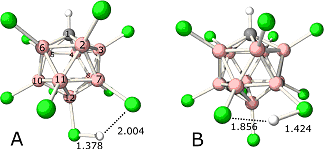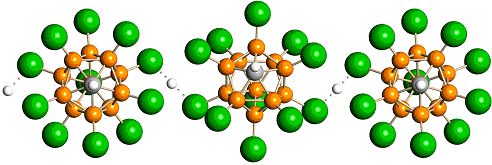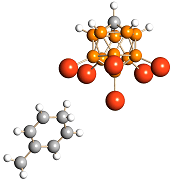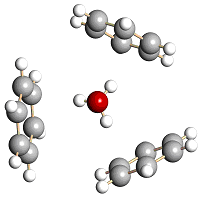|
The carborane acid H(CHB 11 Cl 11 ) is the strongest Lewis-free protic acid presently known. See Juhasz et al. Angew. Chem. Int. Ed. 2004, 43, 5352 . Carborane acids are also very gentle because the anions are very weak nucleophiles and do not engage in oxidative destruction of molecules. This contrasts to traditional superacids such as so-called "Magic Acid" (HFSO 3 /SbF 5 ) which are highly corrosive because the anions are strong oxidants.
For a recent review, see "Carborane acids: New strong-yet-gentle" acids for organic and inorganic chemistry" C. A. Reed, Chem. Commun. 2005, 1669 .
The structure of H(CHB 11 Cl 11 ) has recently been determined in the gas phase (2 monomeric isomers) and the solid phase (polymer).


We are using carborane acids to protonate molecules that haven't been protonated before (e.g. C 60 , C 70 , SO 2 ) or to isolate acidic cations that have previously been difficult to study at room temperature (e.g. Me 3 C + , C 6 H 7 + , H 3 O·3C 6 H 6 + , H 5 O 2 + , H 7 O 3 + , H 9 O 4 + , HP 3 N 3 Cl 6 + etc. Some examples are illustrated below.

The HC 60 + cation showing distinctive 13 C solid state NMR signals.
See Kim et al. Science , 2000 , 289 , 101.

Structure of the toluenium cation in [MeC 6 H 6 + ][CHB 11 H 5 Br 6 - ].
See Reed et al. J. Am. Chem. Soc. 2003 , 125 , 1796 .

Structure of the tri- p -benzene-solvated H 3 O + cation in
[H 3 O + ·3C 6 H 6 ][CHB 11 Cl 11 - ]. See Stoyanov et al. J. Am. Chem. Soc. 2005 , 127 , 7664 .
[back to projects]
|